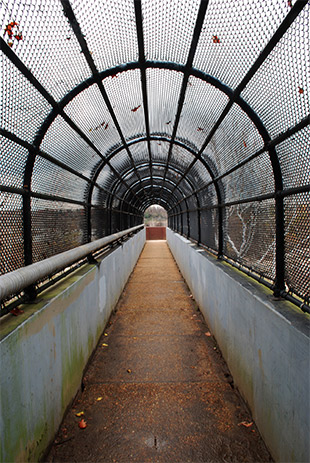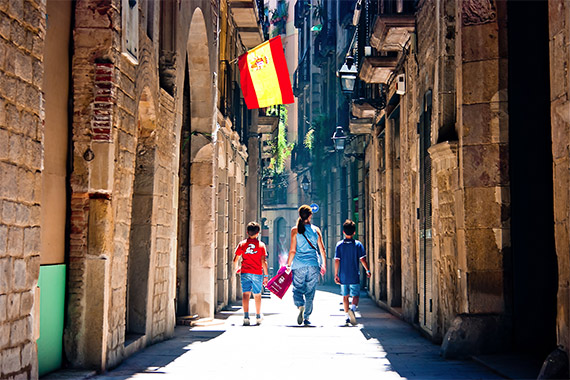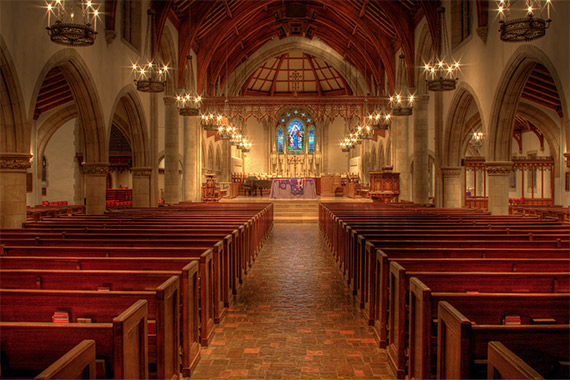There is much confusion among new photographers as to which format—JPEG or RAW—is best to use. The problem is there’s no one correct answer to the dilemma. To be able to know when to use either of the formats, it’s best to have a solid understanding of each of their drawbacks and advantages. The following article will explore both sides of shooting in either RAW and JPEG image formats.
JPEG
A file saved using the JPEG compression format is just that–the image saved to the memory card is compressed using an algorithm. Because the image is compressed, there is an inherent loss in quality. However, the issues associated with JPEG go deeper than just the image saved to the memory card. If you do any post-processing work on your images, every time you save a change, the compression algorithm is re-applied to the image. This causes further loss in quality with each edit/save cycle. The average size for a JPEG image taken at full resolution on a 10.1 megapixel camera is somewhere around 2.6MB.
RAW
A RAW file simply contains the data collected by your camera’s sensor. In itself, it is not an image. It must be converted before it becomes an “image file.” RAW files are significantly better to work with in the post-processing stage. You can very easily adjust many parameters of the image. The average size for a full resolution RAW image on a 10.1 Megapixel camera is 9.3MB. This is approximately 3.5 times larger than a high quality JPEG image.
The Comparison
If you were to look at two pictures taken of the same scene, one in JPEG and one in RAW (without any post-processing) then, you might think the JPEG image looks better, and you wouldn’t be wrong. However, if you were to look at a RAW image with post-processing work done you would think that it was the superior image. But why?
One of the most important factors for getting an image to look technically correct is to get the white balance right (I say “technically,” because you can take a technically correct image with bad composition and it can still be a bad image). Going into exactly what white balance is and how it affects the image is beyond the scope of this article, but I feel a few words on it are needed.
White light is composed of all the colors of the rainbow mixed together with the result that it looks white. Some light sources (e.g. sunlight or an incandescent bulb) have a larger proportion of the colors at the red end of the visible light spectrum, giving the light a ‘warm’ feel. Other sources of light (e.g. fluorescent strip lights) have a greater proportion of the colors at the blue end of the spectrum, giving the light a ‘cold feel’. For your camera to get the colors correct in the scene it is ‘seeing’, it needs to know the proportions of each color that are making up the light. This is called the “color temperature” of light and is measured in K (Kelvin).
Most amateur photographers will usually shoot using AWB. AWB does an OK job of getting the color temperature (and therefore the colors of the image) correct. Now, I come back to my original question: why should a RAW image look better than a JPEG? The answer is RAW images are much easier to manipulate using image editing software such as Photoshop. In Photoshop you can easily adjust many parameters of an image such as white balance, exposure, color saturation, color tint, fill light, brightness, contrast and others. Of course, you can also do this with a JPEG image, but it is not so easy, the results aren’t as good, and you still have the problem of gradual degradation of image quality from the JPEG compression algorithm. In Photoshop (and indeed other image editing programs) you can very easily and quickly manipulate a RAW image to be superior to its JPEG alternative.
So you may now be thinking, “why not always shoot in RAW?” As discussed earlier, RAW image files are approximately 3.5 times larger than JPEG image files. However, this is increasingly becoming less of an issue as flash memory gets cheaper and cheaper. There is another issue associated with RAW. Opening up a RAW file, manipulating it, and saving it as an image file (e.g. JPEG or PNG) can be time consuming when you have a large number of files to process. There are programs that will do a batch conversion, but the results are not as good as if you were to individually tweak and convert each file. There is, however, a solution to this. Many cameras support the option to shoot in both RAW and JPEG simultaneously. This allows us to review the JPEG images and decide which ones need some manipulation without us having to process and convert numerous RAW files.
Better results can be obtained by shooting in RAW. However, converting the files is time-consuming and tedious. The camera does a pretty good job at rendering JPEG files on its own, but it does sometimes get it wrong and it is easier and better to correct a RAW file than a JPEG in the post-processing stage. If you have a decent size memory card, I would recommended using the JPEG + RAW option. When this option is set, the camera saves both a JPEG file and a RAW file to the memory card. This then allows you to quickly look through the JPEG files later and decide which ones need some post-processing work, saving you a lot of time converting files. Of course this does use significantly more space on your memory card. I have an 8GB card, which I find to be enough for a days shooting with a 10.1 Megapixel camera using JPEG + RAW (my card currently has 485 RAWs and 672 JPEGs with 50MB to spare).
About the Author
Alexander Sommerville writes for Use my Canon (www.usemycanon.com). The aim of this website is to introduce beginners to the Canon EOS digital camera, moving new photographers away from the ‘Basic Zone’ and into the ‘Creative Zone’.
Like This Article?
Don't Miss The Next One!
Join over 100,000 photographers of all experience levels who receive our free photography tips and articles to stay current:









Very informative post. We loving shooting in raw.
Lucid , easy to read and understand … evaluates many aspects and remains true to the topic..GREAT JOB KEEP IT UP
when i first became part of the photography world i had no idea of raw . but once learnt it it is all i shot in now..you end result is always better in post editing.. file maybe be larger but the capture is better..
Thanks for the post………. It is really helpful for amateur photographers like me with little knowledge……
“……If you do any post-processing work on your images, every time you save a change, the compression algorithm is re-applied to the image. This causes further loss in quality with each edit/save cycle. ”
Thanks for the informative article. I agree there’s absolutely nothing wrong with using RAW to describe these files.
But on another note referring to the beginning where Alex talks about jpgs, I think it’s worth mentioning that when you open a jpg and make edits, saving it as a PSD or TIF file format instead of the jpg format will stop any further quality loss. Once saved to these compression-less formats, you can save over and over yet never need to worry about losing quality again … unless you later choose to save it as a jpg.
I think it’s also fair nowadays to factor the understanding of the camera and its capability when deciding to use RAW or JPEG. Vanilla understanding of the file formats is starting to be insufficient to help someone choose between the two. Simple factors like file size and what could be done to the files remain relevant though.
“Michal” you’re a putz. He doesn’t mention it as a format but rather RAW is a data set or container like manipulated exif data or xml which itself is just a framework. I went back to read again and only saw option or the like. So learn more English then read more English then just keep your comments to yourself like I should’ve done here, because you’re still a putz.
Very helpful . Thank you
Michal
if you are going to leave such rediculously pedantic and smart arsed comments like that, please ensure that you at least use correct grammar and spelling.
Your point … badly made and as pompous as it was, was ruined by the third word of your post.
Get a dictionary please.
I agree with Paul Allen. I am also an experienced photographer and I am certain that this article would be of use to a great many people.
Thanks to the author Mr Sommerville.
Keep up the good work.
you’re so RIDICULOUSLY* pedantic james
“There is no such thing as “RAW”, there is no picture file format like that.”
What?
The first line of your source article say “A camera raw image file”.
When someone discusses JPG files vs. RAW files we know EXACTLY what they’re referring to. Absolutely nothing misleading about the article, which is excellent as always.
There is now such thing as “RAW”, there is no picture file format like that. Please read http://en.wikipedia.org/wiki/Raw_image_format carefuly and correct the misleading article.